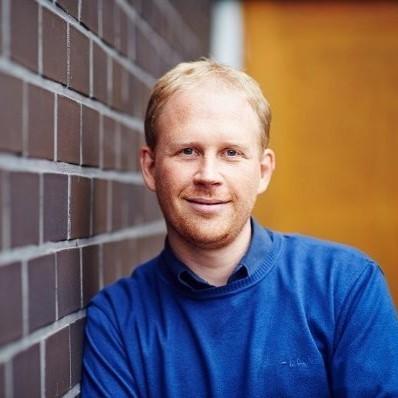
Acronym: WILLOW
Title: Wholistic and Integrated digitaL tools for extended Lifetime and profitability of Offshore Wind farms
Call: HORIZON-CL5-2022-D3-03-04
EU nr: 101122184
Period: 36 months 1/10/2023- 30/09/2026
Budget : €5,816,861.25
VUB Budget: 334,375.00 €
Contact: Prof. Dr. Christof Devriendt
https://avrg.vub.be/research/core-themes/offshore-wind-energy/
At ERIS we got the chance to ask Christof 2 questions:
What is the project WILLOW about?
Christof:“When we talk about wind farms (WF) actively contributing to power system stability then we look into delivering a commanded (rather than maximum) power output following the needs of the grid operator. This implies downregulating (also known as curtailment) the wind farm (producing less than available power), and consequently the individual turbines. These windfarm control actions can have a negative effect on the structure health of the wind turbines, and therefore on their useful lifetime.
Today, the state of practice -or state of the art- in the industry- of wind farm ‘curtailment’, or in other words: ‘how to restrain/limit a farm?’ is often based on farm level setpoints put forward by the grid operator and downregulating each turbine by the same amount. The impact this kind of strategy might have on the lifetime of the substructures and other critical windturbine components is hereby mostly disregarded.
This approach is however not based on recent research on wind farm control and optimal operation planning . To the contrary recent research performed by OWI-lab reported how excessive downregulation and frequent start-stop events may negatively affect fatigue life as turbines operate in off-design conditions, due to transients and wave loads with absent or diminished aerodynamic damping. WILLOW aims to provide an open-source, data-driven smart curtailment solution to the Wind Farm Operators with the basis of an integrated Wind Farm Control system looking for a trade-off between the power production and the lifetime consumption. This will contribute to the reduction of the LCOE and to the increase of the AEP towards the current trend of design and operating life of offshore wind farms with up to 20 MW turbines beyond 50 years.”
Why is WILLOW important for VUB ?
Christof: “According to the North Sea Energy Roadmap 2050, the North Sea takes the lead in installed capacity and expertise and, is one of the most promising regions for offshore wind due to its high wind speeds and shallow waters. Last month during the NorthSaa Summit in Ostend - and with the participation of Belgium, Denmark, France, Germany, Ireland, Luxembourg, the Netherlands, Norway and the UK signed the Ostend Declaration at a North Sea Summit on the Belgian coast on 24 April, pledging to increase their offshore wind capacity to 300GW by 2050.
In fact, it is in this European offshore wind scenario where the WILLOW project comes on stage. The proposed innovations will must allow VUB to strengthen its academic position within the field of physics-based and data-driven modelling for structural health monitoring of offshore structures in a digital twin context.”
What will be the role for VUB in the WILLOW project?
“The VUB will be taking up the lead for developing the farmwide data driven lifetime assessment & novelty detection tools. Today offshore windfarm operators cannot adequately use information on the actual lifetime consumption and remaining useful lifetime based on in-field data to improve their daily operation and maintenance decisions. This project wants to overcome this limitation by leveraging the use of so-called physics-based and data-driven digital twins and hereby push the state-of the art in both these technologies. By doing so we are moving towards data-driven decision support based on structural reliability and we can actively putting operators into control to guarantee and optimize the lifetime of their assets.
This project is only possible because VUB can start from its excessive experience in offshore structural health monitoring and data driven life time assesment gathered over the last years within the context of several finished and ongoing Flemish VLAIO project and national ETF projects. The VUB will also work very closely with SIRRIS, founding partner of the OWI-Lab. with regard to the topic of corrosion, pitting and stress corrosion cracking.
Finally VUB will closely work together with its industrial partners 24SEA, spin-off of VUB since 2016, and Norther, Belgian offshore windfarm operator. As such VUB will have access to real-time operational data and leverage the use of fleetwide deployed IOT sensors by 24SEA within the Norther Windfarm. This will allow to validate the research in the field and to assure the industrial relevance of the developments, hereby increasing its potential valorisation .
Abstract
Wind energy takes on a large share in the energy market and will play a crucial role in securing the stability of power grids in the future. However, operation of wind farms, and especially offshore wind farms, are not yet ideal. The operation in fluctuating conditions of wind availability and power grids demand as well as the harsh environmental condition where the offshore wind farms are built, have a negative effect on the structure health of the wind turbines, and therefore on their useful lifetime.
In this context, WILLOW will develop an integrated system that will provide an open-source, data-driven smart curtailment solution to the Wind Farm Operators with the basis of an integrated Wind Farm Control system looking for a trade-off between the power production and the lifetime consumption.
With this aim, WILLOW pretends to design a novel Structural Health Monitoring (SHM) System able to provide high quality data to perform a reliable fleet life assessment using physical models and data-based AI methods which will be used for decision-making and maintenance scheduling. This will contribute to the reduction of the Levelized Cost of Energy (LCOE) and to the increase of the Annual Energy Production (AEP) towards the current trend of design and operating life of offshore wind farms with up to 20 MW turbines beyond 50 years.
